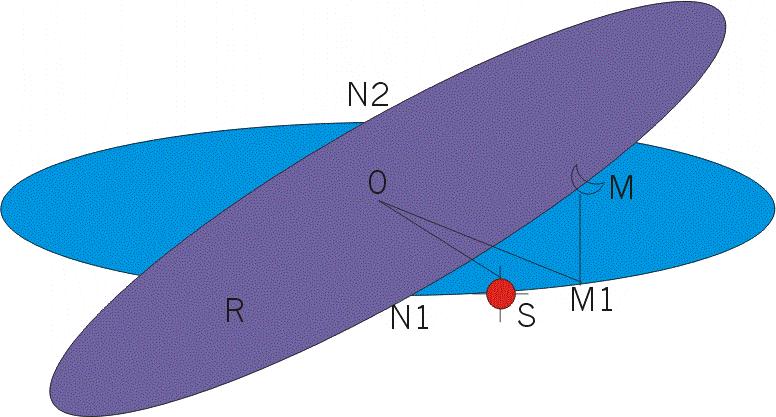
We'll have the picture of the ecliptic and the moon's orbit as a reference and explain more about the nodes

The moon moves along its path in the anticlockwise direction. So it is seen from the figure that the moon crosses N1 in the upward direction and N2 in the downward direction. So N1 is called as the ascending node and N2 is called the descending node. The ascending node is called the Rahu in India and the descending node as the Ketu.
The plane of the moon's orbit does not remain fixed but keeps rotating around the ecliptic in clockwise direction (westward) at the rate of 19.355° per year, keeping the angle between the moon's orbit and the ecliptic as constant i.e. as 5.2°. So it is understood that if N1 and N2 are the nodes at any instant of time then after some time the nodes have rotated in clockwise direction and are at N11 and N22. It takes about 360/19.355 = 18.6 years (6793.4 days) for the nodes Rahu and Ketu to complete one full revolution along the ecliptic. This means that if rahu and ketu are at point N1 and N2 at some time then they will reach the same position after 6793.4 days and hence the constantly changing moon's orbit comes back to the same position after this period.
By taking into account the moon's motion, the sun's motion along the ecliptic, and the motion of the nodes, one can calculate when the eclipses will occur. Since these calculations are too complex we shall not be taking them up for discussion here.